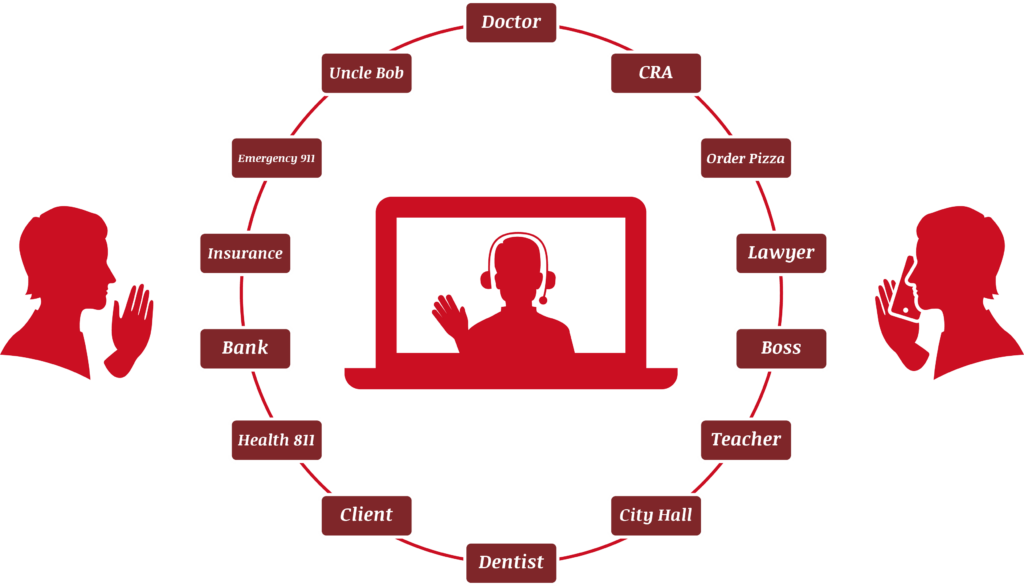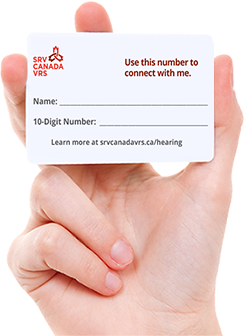VRS Video Interpreters and the VRS Call
The VRS Video Interpreter is a critical part of every successful VRS call.
The Video Interpreter (VI) is a specifically trained interpreter who connects Deaf, hard of hearing, Deaf-Blind or speech impaired Canadians with hearing people via Canada VRS. The VI interprets the VRS call and translates between spoken (English or French) and American Sign Language (ASL) and Langue des signes québécoise (LSQ).
VIs handle a wide variety of call types
The VIs handle a wide range of call types. Some VRS calls are social between family members and friends. Other VRS calls concern work, health, banking, school or just about any topic you can imagine. Still, other calls may concern emergency situations, such as calls to 9-1-1 or to a mental health service.
Video Interpreter's Reality

A Day in the Life of a Video Interpreter
What callers can expect from their VI
Confidentiality
Privacy
Objectivity
Competence
Professionalism
Confidentiality and Privacy
Every VI receives VRS training and follows CAV’s policies and guidelines. VIs adhere to strict confidentiality and privacy requirements. Confidentiality is important to our customers, and Canada VRS VIs do not and cannot record the content of calls.
Objectivity
Callers are solely responsible for what they say. The VI does not intervene to correct, change, judge, or explain the caller’s content. The VIs ensure they convey the form, tone, and meaning of the message between the callers.
Professionalism
Canada VRS VIs are held to a high standard of professionalism. When necessary, CAV has a complaint and feedback management process that allows users to provide feedback concerning the standards of quality of its video interpreters.
Competence
All Canada VRS VIs receive rigorous training. VIs who take 9-1-1 and 9-8-8 calls receive special training to ensure accuracy and speed of communication.
Did you know VRS customers have the choice
to self announce?
VI tips for making efficient VRS calls
1.
Ensure you’re in a well-lit area so VI’s have a clear image of you during interpretation
2.
Inform the VI of your call topic helps ensure accurate interpretation.
3.
Inform the call recipient that there may be a pause/delay due to the interpretation.

